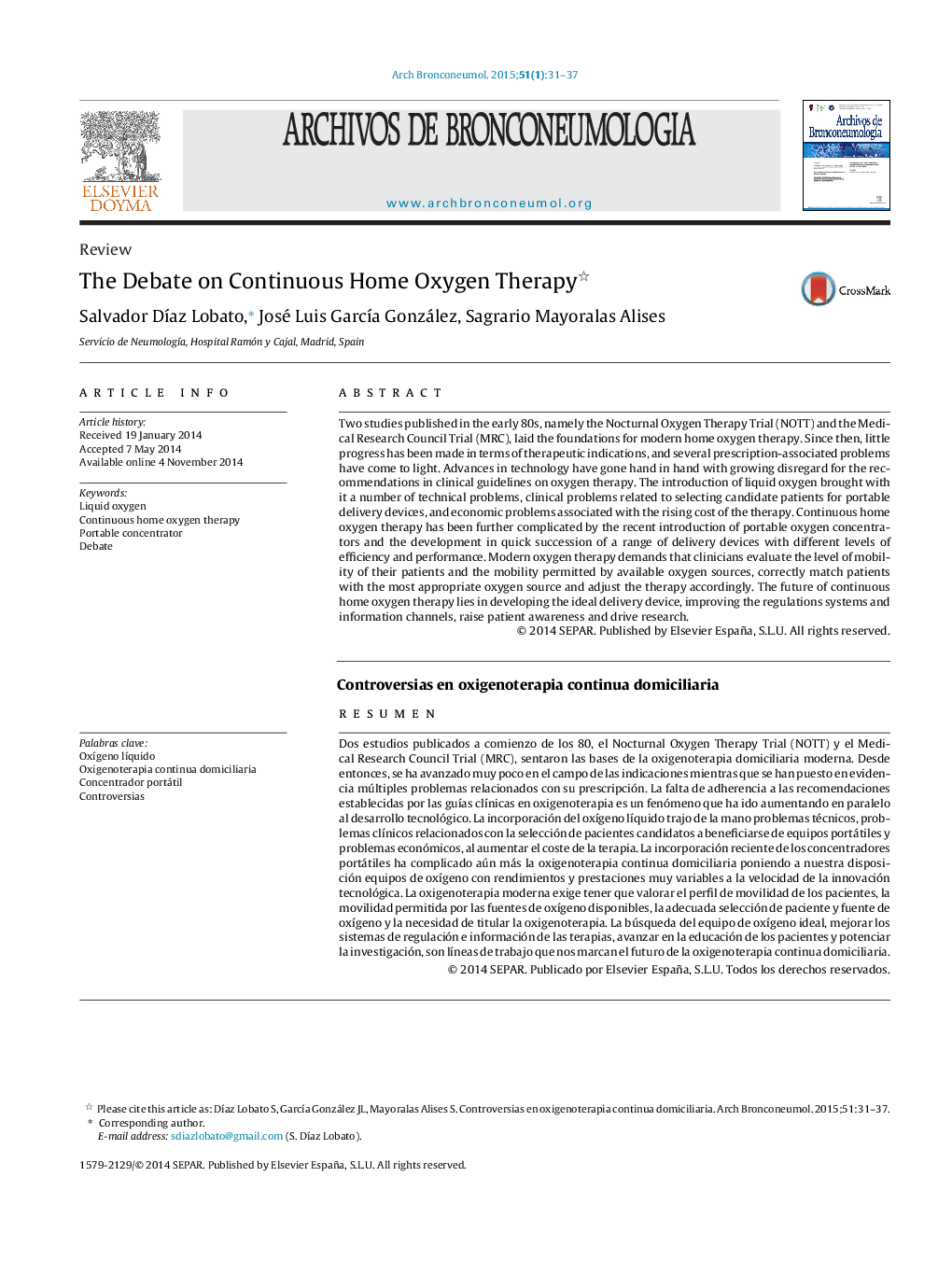| کد مقاله | کد نشریه | سال انتشار | مقاله انگلیسی | نسخه تمام متن |
|---|---|---|---|---|
| 4205311 | 1279903 | 2015 | 7 صفحه PDF | دانلود رایگان |
Two studies published in the early 80s, namely the Nocturnal Oxygen Therapy Trial (NOTT) and the Medical Research Council Trial (MRC), laid the foundations for modern home oxygen therapy. Since then, little progress has been made in terms of therapeutic indications, and several prescription-associated problems have come to light. Advances in technology have gone hand in hand with growing disregard for the recommendations in clinical guidelines on oxygen therapy. The introduction of liquid oxygen brought with it a number of technical problems, clinical problems related to selecting candidate patients for portable delivery devices, and economic problems associated with the rising cost of the therapy. Continuous home oxygen therapy has been further complicated by the recent introduction of portable oxygen concentrators and the development in quick succession of a range of delivery devices with different levels of efficiency and performance. Modern oxygen therapy demands that clinicians evaluate the level of mobility of their patients and the mobility permitted by available oxygen sources, correctly match patients with the most appropriate oxygen source and adjust the therapy accordingly. The future of continuous home oxygen therapy lies in developing the ideal delivery device, improving the regulations systems and information channels, raise patient awareness and drive research.
ResumenDos estudios publicados a comienzo de los 80, el Nocturnal Oxygen Therapy Trial (NOTT) y el Medical Research Council Trial (MRC), sentaron las bases de la oxigenoterapia domiciliaria moderna. Desde entonces, se ha avanzado muy poco en el campo de las indicaciones mientras que se han puesto en evidencia múltiples problemas relacionados con su prescripción. La falta de adherencia a las recomendaciones establecidas por las guías clínicas en oxigenoterapia es un fenómeno que ha ido aumentando en paralelo al desarrollo tecnológico. La incorporación del oxígeno líquido trajo de la mano problemas técnicos, problemas clínicos relacionados con la selección de pacientes candidatos a beneficiarse de equipos portátiles y problemas económicos, al aumentar el coste de la terapia. La incorporación reciente de los concentradores portátiles ha complicado aún más la oxigenoterapia continua domiciliaria poniendo a nuestra disposición equipos de oxígeno con rendimientos y prestaciones muy variables a la velocidad de la innovación tecnológica. La oxigenoterapia moderna exige tener que valorar el perfil de movilidad de los pacientes, la movilidad permitida por las fuentes de oxígeno disponibles, la adecuada selección de paciente y fuente de oxígeno y la necesidad de titular la oxigenoterapia. La búsqueda del equipo de oxígeno ideal, mejorar los sistemas de regulación e información de las terapias, avanzar en la educación de los pacientes y potenciar la investigación, son líneas de trabajo que nos marcan el futuro de la oxigenoterapia continua domiciliaria.
Journal: Archivos de Bronconeumología (English Edition) - Volume 51, Issue 1, January 2015, Pages 31–37
